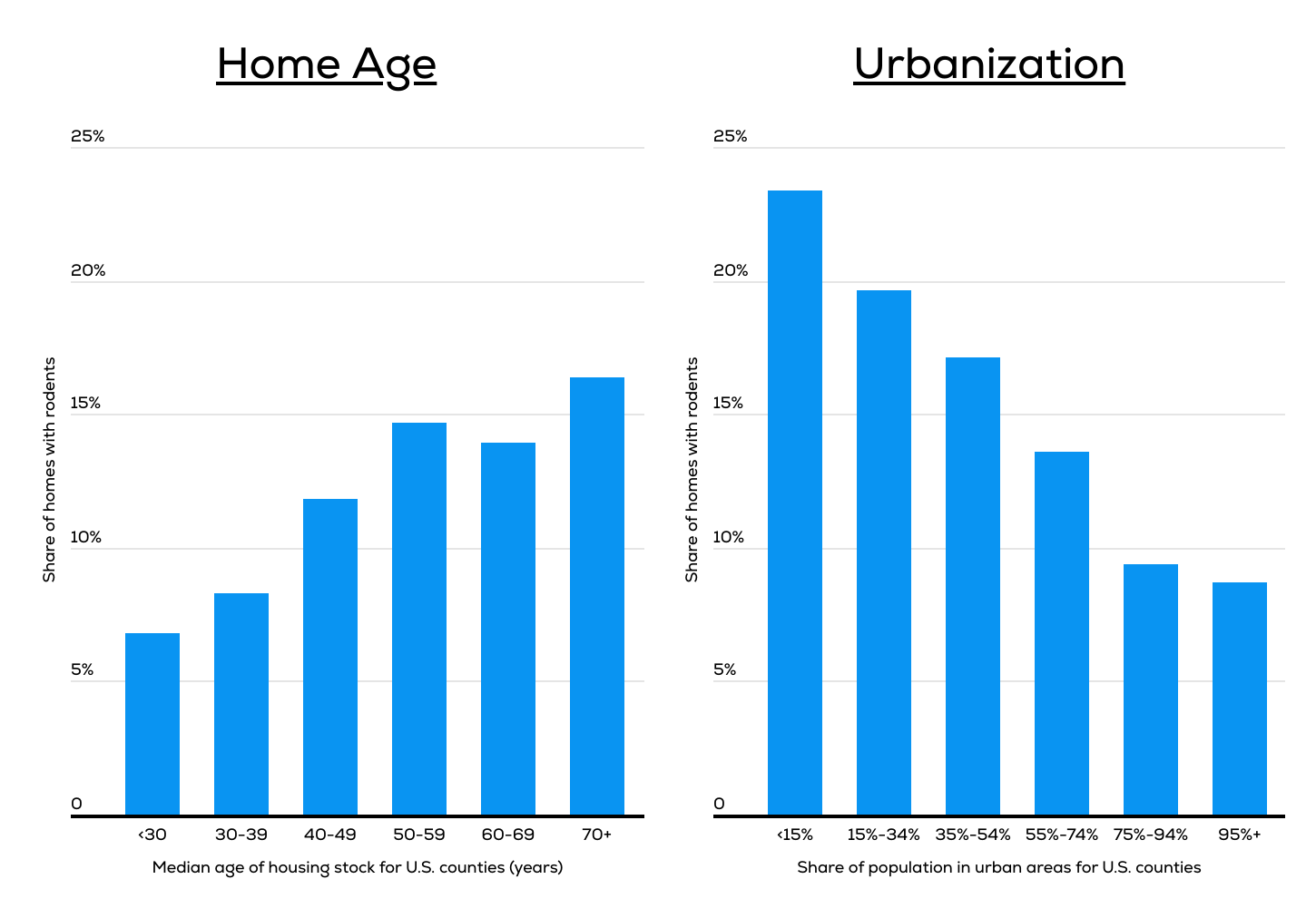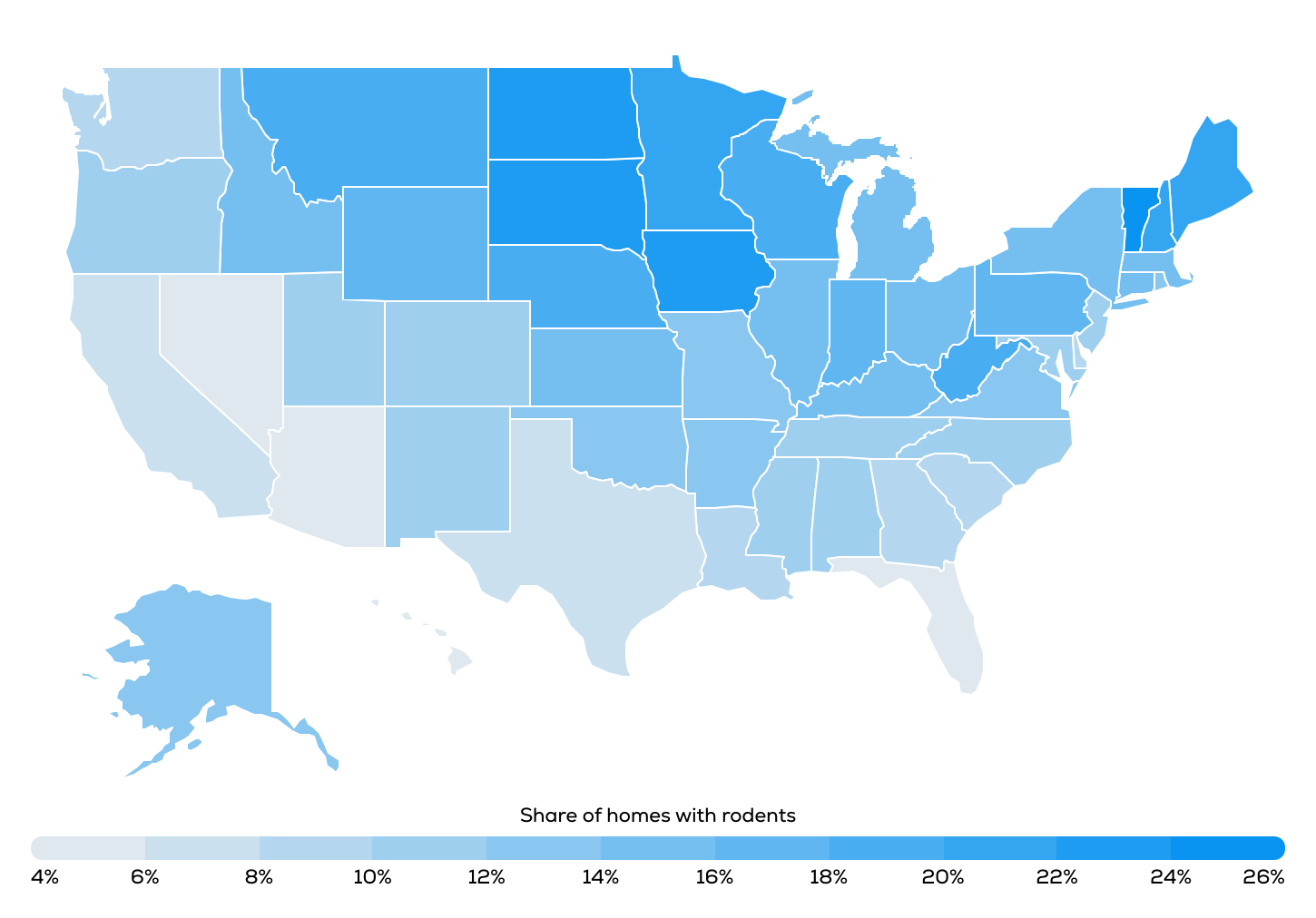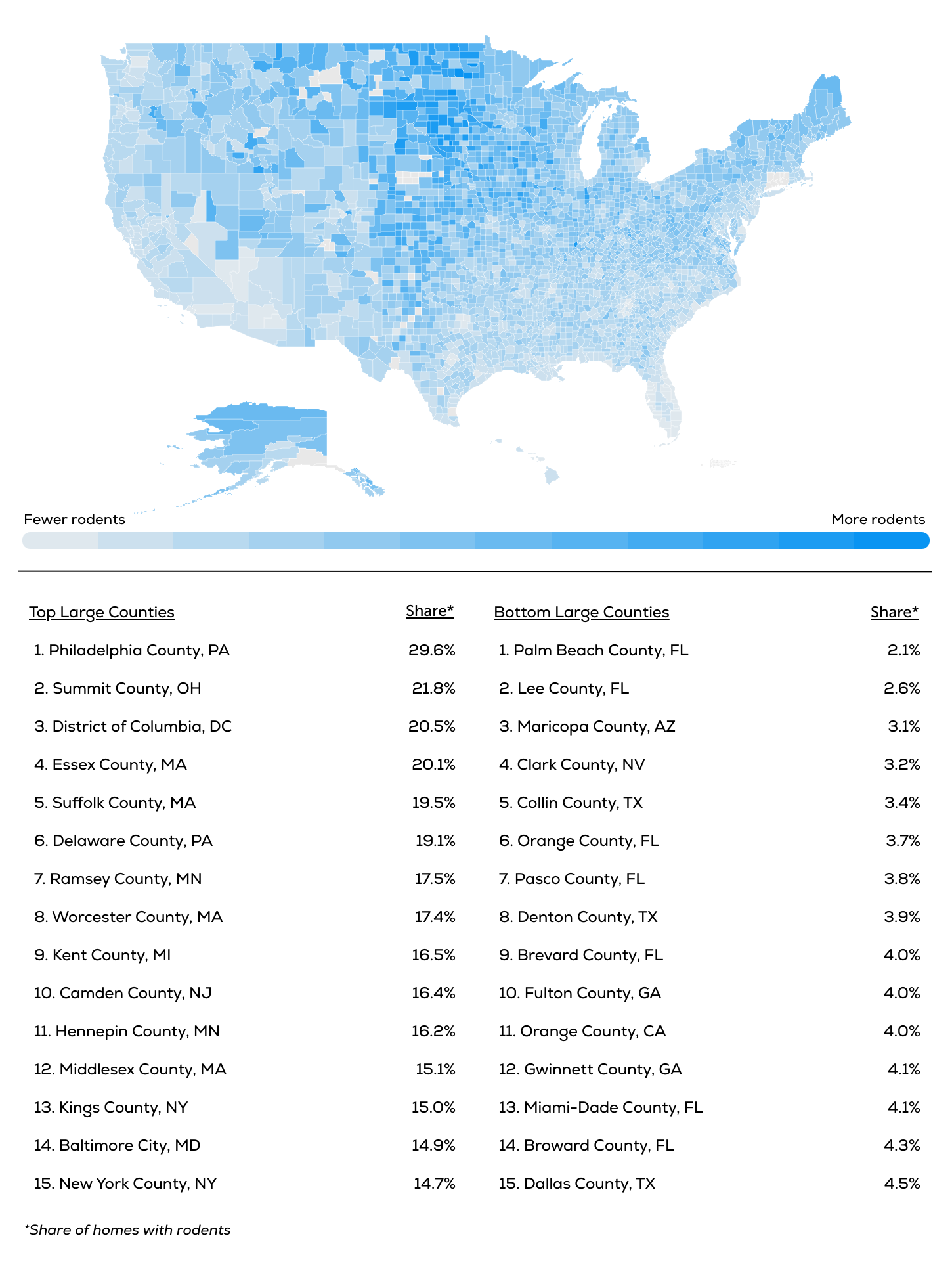With winter in full swing, rodent infestations have become an unwelcome reality for millions of Americans. As temperatures drop, mice and rats seek warmth and food indoors, turning homes into their seasonal havens. According to the American Housing Survey, 11.6% of households nationwide report rodent problems annually, impacting an estimated 16.2 million homes and 38.5 million people—comparable to the entire population of California.
Rodents bring more than just annoyance; they pose significant health and safety risks. According to the Centers for Disease Control and Prevention (CDC), rats and mice can spread diseases such as hantavirus, leptospirosis, and salmonella through their droppings, urine, and nests. They also worsen asthma and allergies, particularly in children. Beyond health hazards, rodents cause structural damage by gnawing through walls, wiring, and insulation—sometimes even sparking electrical fires.
While leaving food out, crumbs on the floor, or garbage in unsealed containers increases the likelihood of rodent infestations, factors beyond individual behavior often have a greater impact. Home age, whether a home is in a rural or urban area, and local climate conditions are all strong determinants of rodent presence. These structural and environmental factors mean that some regions face consistently higher risks, even with diligent housekeeping.
The Presence of Rodents Varies by Home Age & Urbanization

Source: Cinch analysis of U.S. Census Bureau data
Rodent infestations are strongly linked to the age of housing stock, with older homes showing a higher prevalence of infestations. Counties with the oldest homes (median age of 70 years or more) have the highest rates of rodent presence, affecting 16.4% of households. By comparison, only 6.8% of homes in counties where the median home age is less than 30 years report rodent issues. This pattern is due to older structures having more entry points, deteriorating materials, and outdated construction techniques that make them more susceptible to infestations. Over time, maintaining these aging homes becomes increasingly challenging, creating ideal conditions for rodents seeking warmth and food during colder months.
Urbanization presents a surprising trend: rodent infestations are more common in less urbanized areas. In counties where fewer than 15% of the population lives in urban settings, 23.4% of homes report rodent problems. Conversely, in highly urbanized counties where 95% or more of the population lives in densely populated areas, only 8.7% of homes are affected.
This counters the common assumption that cities are the epicenter of rodent problems. One explanation is that the data primarily measures rodent sightings inside homes rather than in public areas, where urban infestations may be more noticeable. Additionally, urban residents often live in multi-unit buildings, such as apartments or condos, which have multiple floors. Rodents are less likely to reach higher floors, making infestations less visible in these settings. On the other hand, single-family homes, which dominate rural areas, are closer to the ground and have more direct access points for rodents, leading to higher reported sightings and signs of infestation.
The Percentage of Homes with Rodents by State

Source: Cinch analysis of U.S. Census Bureau data
While home age and urbanization play a key role in rodent infestations, climate is another factor influencing regional differences. States located in colder regions, particularly in the Midwest and Northeast, report the highest percentages of homes affected by rodents. Vermont leads with 24.1% of households experiencing rodent issues, followed by South Dakota (23.2%) and North Dakota (22.9%). Other states with high rates include Iowa (22.2%) and Maine (21.2%). These areas endure long, harsh winters that drive rodents indoors in search of warmth and shelter. Additionally, older housing stock and rural living conditions in these regions provide ample access points and nesting opportunities for rodents.
In contrast, warmer states like Florida and Arizona report significantly lower rodent infestation rates, with only 4.4% of households affected. Nevada (4.8%) and Hawaii (5.7%) also rank among the states with the fewest rodent problems. Mild winters in these areas reduce the need for rodents to invade homes, while newer housing stock and higher urbanization levels limit entry points and make it harder for rodents to establish themselves indoors. The rapid growth and modern development in states like Florida and Arizona have resulted in better-sealed homes, further reducing the likelihood of infestations. It’s important to note, though, that cockroach infestations are more common in these warmer climates, reflecting a different challenge for pest control.
The Percentage of Homes with Rodents by County

Similar trends hold at the county level with those in the Midwest and Northeast reporting the highest rates of rodent sightings. Among the nation’s largest counties with populations of 500,000 or more, rodent infestations are most prevalent in areas with older housing stock and colder climates. Philadelphia County, PA, leads with 29.6% of households reporting rodent problems, followed by Summit County, OH (21.8%), and the District of Columbia (20.5%). Counties in Massachusetts also rank highly, with Essex County (20.1%), Suffolk County (19.5%), and Worcester County (17.4%) all ranking among the top 10. These areas often combine older homes with colder winters, conditions that drive rodents indoors and increase the likelihood of infestations.
At the opposite end of the spectrum, households in warm-weather counties report much lower rates of rodent sightings. Palm Beach County, FL, has the smallest percentage of homes affected among large counties at just 2.1%, followed by Lee County, FL (2.6%), and Maricopa County, AZ (3.1%). Counties in Florida dominate the bottom of the list, reflecting the state’s mild winters and newer housing stock that limit rodent activity indoors. Counties in Texas, Nevada, and California also appear in the bottom tier, where modern construction and urbanization further reduce rodent presence.
These patterns highlight how location, climate, and housing conditions impact rodent infestations, underscoring the need for improved control strategies in certain areas to address the issue and protect public health.
This analysis was conducted by Cinch, a company that provides marketing software for home service businesses, using data from the U.S. Census Bureau. For complete results and a detailed methodology, see the original report: U.S. Counties With the Worst Rodent Problem.
Methodology

Photo Credit: Igor Normann / Shutterstock
To identify the locations with the most severe rodent problems, researchers at Cinch calculated the percentage of households that reported signs of mice or rats inside the home within the prior 12 months. In the event of a tie, locations with a higher total number of households with reported rodent sightings were ranked higher.
Cinch also estimated the total number of individuals living in households with rodent activity by multiplying the percentage of affected households by the total population in each location. To provide additional context, statistics on home age and urbanization levels were included in the analysis.
Counties with populations below 1,000 were excluded. The remaining counties were categorized into three groups based on population size: small (<100,000), midsize (100,000–499,999), and large (500,000+). The analysis utilized the most recent data available from the U.S. Census Bureau’s American Housing Survey, American Community Survey 5-Year Estimates, and Geography Program.
For complete results, see U.S. Counties With the Worst Rodent Problem on Cinch.





